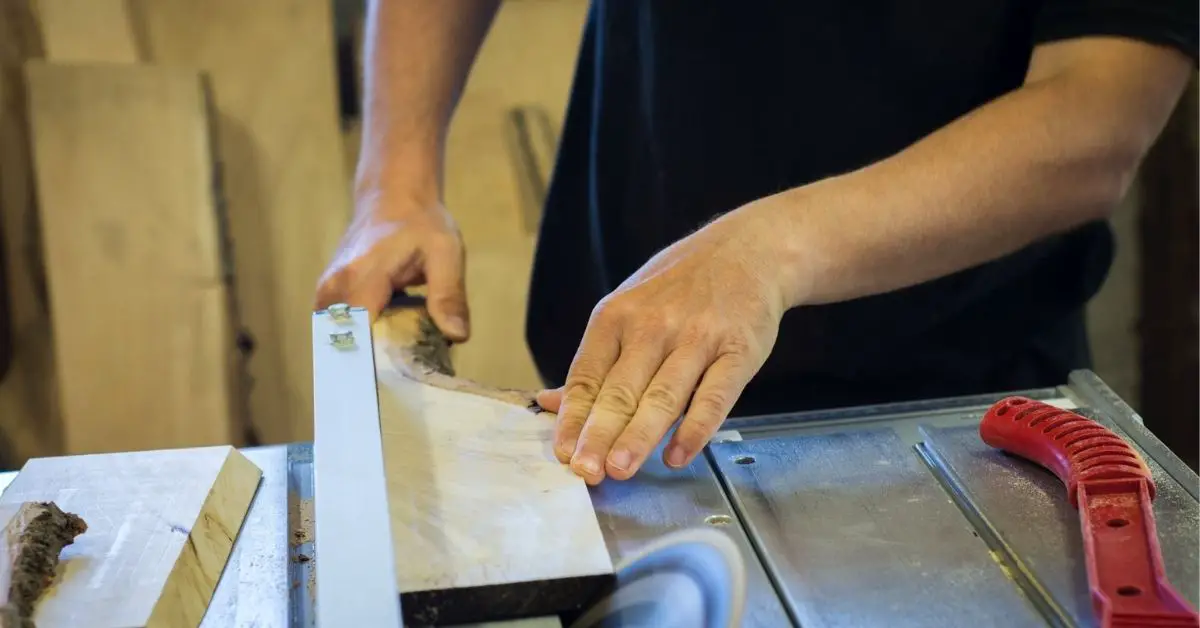Share

The table saw is a vitally important tool for any woodworker. With the right blade, it can make quick work of even the toughest lumber. Over time, though, table saw tops can become uneven and require additional maintenance to keep them functioning properly.
Fortunately, there are several solutions available on the market today that will help on how to flatten aluminum table saw tops so you can get back to making beautiful furniture with ease!
How to Flatten Aluminum Table Saw Top
Here are the 7 top solutions for how to flatten the aluminum table saw top.
Solution 1: 100 Grit Flap Sanding Discs
First, you can use a flap sanding disc made from 100 grit paper that attaches to an orbital sander or power drill. You should stick with the coarse grade of paper as it works well on fiberglass, and this is what these discs are typically used for. However, if your metal tabletop has any rust spots, go ahead and first remove them with fine-grade steel wool before using the flaps discs.
Also, remember not to press down too hard because you don’t want to create depressions in the surface by gouging out parts of it, Let gravity do the work! If you feel like you’re going too fast, switch to a lighter touch and let the disc do the work.
Solution 2: Use A Metal File
If your metal tabletop is made from steel or wrought iron, then use either a standard metal file (round) or bastard file for this task.
However, if it’s aluminum that needs flattening out, avoid using these kinds of files as they will leave visible scratch marks on their surface. Instead, opt for sheet abrasives mentioned in solution one above because their roughness won’t be as noticeable when filing down dents on an aluminum tabletop .
When shaping flat spots by filing them with any kind of file, always go perpendicular to the direction of existing grooves/dents so new ones don’t get created.
Solution 3: Use A Belt Sander
You can use a belt sander or disc grinder for this process, but it’s recommended that you start with 100 grit sandpaper attached to the tool first before moving on to finer grades of paper (150 and then 220).
This is because metal shavings from coarser papers are usually coarse themselves making them easier to remove than fine ones. Just pay close attention while using these tools so as not to overheat the surface by holding the one in contact with it too long. You don’t want any scorch marks!
Also, make sure your tabletop has good ventilation while you’re working on flattening out dents/scratches with whatever tool mentioned here because inhaling metal dust isn’t very healthy for your lungs.
Solution Four: Use A Sandblaster
You can rent a sandblaster at most tool rental shops or home improvement stores to get the job done quickly and easily. Just make sure you wear protective gear while using this kind of machinery, including safety glasses in addition to breathing protection, because the aluminum powder is not suitable for inhalation.
You may use 80 grit paper when blasting out dents on an aluminum tabletop, but if yours has some rusty spots that need removal before continuing with flattening it out, then use steel wool beforehand instead. If there are any sharp edges around the flattened area after blasting one out, just go over them lightly with 100 grit sandpaper for a smooth finish.
Solution Five: Use A Ball Peen Hammer
You can also use a ball-peen hammer to flatten out dents on an aluminum tabletop. Don’t go too overboard with this though, as you don’t want your tabletop dented in the opposite direction of where it was before! Start by laying down some sort of padding (such as wood) over the area that needs flatting, then gently pound away at it with repeated light blows from the edge of the hammer’s head.
This will gradually work its way into flattened spots without having to exert too much force or risk damaging any part of your tabletop or surrounding areas. Finally, if there are any sharp edges around these newly flattened parts, just take care of them with 100 grit sandpaper before applying your tabletop’s finish.
Solution Six: Use A Chisel
If you have a steel or wrought iron tabletop that needs flattening out, then use either an engineer’s (square) chisel or beveled woodworking chisel for this task. Just remember to go slow when using these tools.
Also, make sure there are no flammables near where you’re working if the surface has any rusty spots on it! Always clean off metal shavings afterward so as not to create dangerous work environments. The best way to do this is by hitting the flat side of the blade against some sort of hard surface (such as an anvil or metal bench block) while removing the shavings with a wire brush wrapped around your finger. It’s best to do this outdoors if possible.
Solution Seven: Use A Hand Planer
When using hand tools, always go gently because you don’t want to end up creating more dents in the tabletop than before. Aluminum is softer than steel but no less dangerous when mishandled so take extra care not to slip and end up hurting yourself!
Start by planning off any burs from sharp edges, then hold the tool at about 45 degrees when working on aluminum tabletops. If there are multiple scratches/dents that need flattening out, start with one of the first rather than trying to go over the whole tabletop at once.
In conclusion, there are several different ways to flatten out dents on an aluminum tabletop. If you have some patience and take your time, then the result will be quite satisfying! Check our blogs about how many RPMs a chainsaw runs and changing the blade on the ridged tile saw.



0 Comments